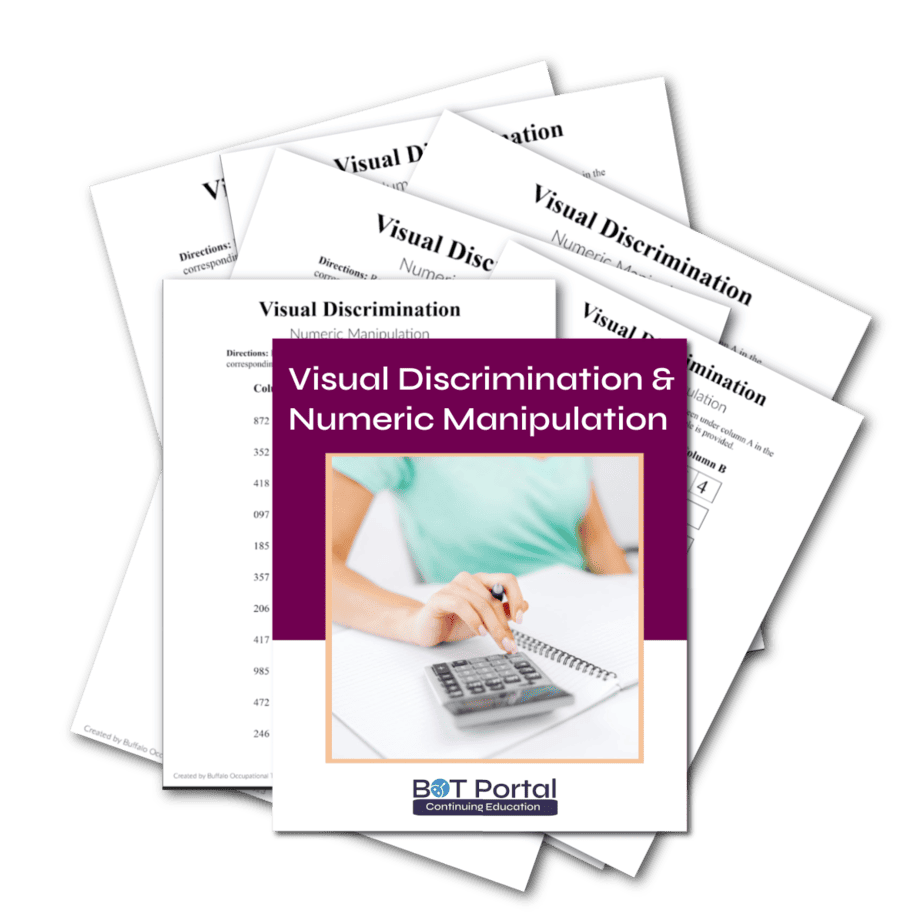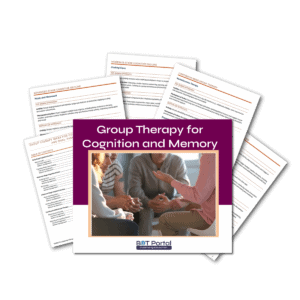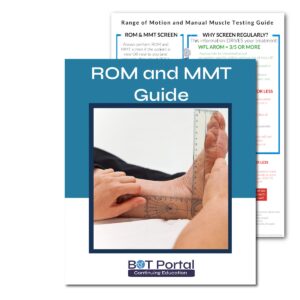Description
Visual Discrimination and Numeric Manipulation
(Digit Span Reversals)
Visual discrimination and numeric manipulation skills are essential for various cognitive tasks, including reading, writing, math, and problem-solving. However, individuals with neurological conditions, such as traumatic brain injury or developmental disorders, may experience challenges with these skills, particularly in tasks involving digit span reversals. This printable guide provides an in-depth exploration of visual discrimination, numeric manipulation, and the significance of digit span reversals in cognitive function, offering evidence-based strategies for improvement.
Visual discrimination refers to the ability to differentiate and recognize visual stimuli based on their distinct features, such as shape, size, color, and orientation. Deficits in visual discrimination can manifest as difficulties with letter and symbol recognition, pattern recognition, and visual scanning tasks. These challenges can impact various aspects of daily life, including reading comprehension, writing legibility, and visual memory.
Numeric manipulation involves the manipulation and processing of numerical information, such as performing calculations, solving math problems, and understanding numerical relationships. Individuals with numeric manipulation deficits may struggle with tasks requiring mental arithmetic, numerical sequencing, and working memory. These difficulties can hinder academic performance, financial management, and other activities requiring numerical proficiency.
Digit span reversals, a specific aspect of numeric manipulation, involve the ability to accurately recall and reproduce numerical sequences in both forward and backward order. This task requires working memory, attention, sequencing, and cognitive flexibility, making it an important indicator of executive function and cognitive processing speed. Deficits in digit span reversals may indicate underlying impairments in these cognitive domains, such as deficits in working memory or attentional control.
Addressing digit span reversals is crucial for improving overall cognitive function and academic performance. By enhancing working memory and cognitive flexibility, individuals can improve their ability to manipulate numerical information, follow sequential instructions, and solve complex problems. Moreover, interventions targeting digit span reversals can have broader implications for executive function and academic achievement, laying the foundation for success in various cognitive tasks and activities.
Evidence-based strategies for improving digit span reversals include mnemonic techniques, such as chunking or visualization, to aid memory recall and sequencing. Additionally, repetitive practice and structured exercises focusing on forward and backward digit span tasks can strengthen working memory and cognitive processing speed. Multisensory approaches that integrate auditory, visual, and kinesthetic modalities can also enhance learning and retention of numerical sequences.
Other Links:
Check out BOT Portal: Resource Site for Occupational Therapy Students and Practitioners
Executive Function & Cognition Treatments for Occupational Therapy




